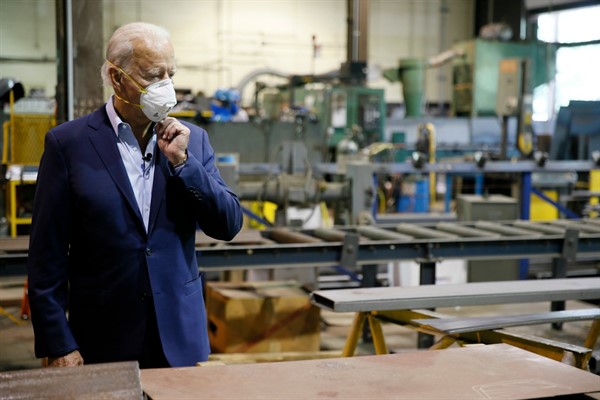However one judges the results, there is no question that President Donald Trump has taken American trade policy in a very different direction than his predecessors going back decades. He has rejected multilateralism and severely weakened the World Trade Organization, while embracing the use of tariffs against allies and adversaries alike. Biden has been clear that, if elected, he would restore a more multilateral approach, especially with respect to challenging Chinese trade practices. He has also assured union supporters that he would put the interests of American workers at the core of his trade policy. Beyond those broad principles, however, Biden has been more vague about rolling back Trump’s tariffs, reforming and reviving the WTO, or negotiating new trade agreements.
Overall, unlike Democratic presidential candidates to his left such as Sen. Bernie Sanders of Vermont and Sen. Elizabeth Warren of Massachusetts, Biden has hewed throughout his career, including 36 years in the Senate and eight as vice president, to a mainstream approach to trade policy. While calling for the enforcement of labor and environmental standards, Biden has generally supported agreements with major trade partners. He voted for the original North American Free Trade Agreement in 1993 and for legislation paving the way for China to join the WTO in 2001, and supported the negotiation of the Trans-Pacific Partnership as Barack Obama’s vice president.
In a July 9, 2019, speech on foreign policy, however, Biden declared that, “There’s no going back to business as usual on trade with me.” Obama also ran on and came into office with a cautious approach to trade policy. But he ultimately pushed long-stalled trade agreements with South Korea and Colombia through Congress, and negotiated the TPP, renamed the Comprehensive and Progressive Agreement for Trans-Pacific Partnership by the 11 Pacific Rim countries that chose to proceed with the pact after Trump withdrew from it soon after taking office.

